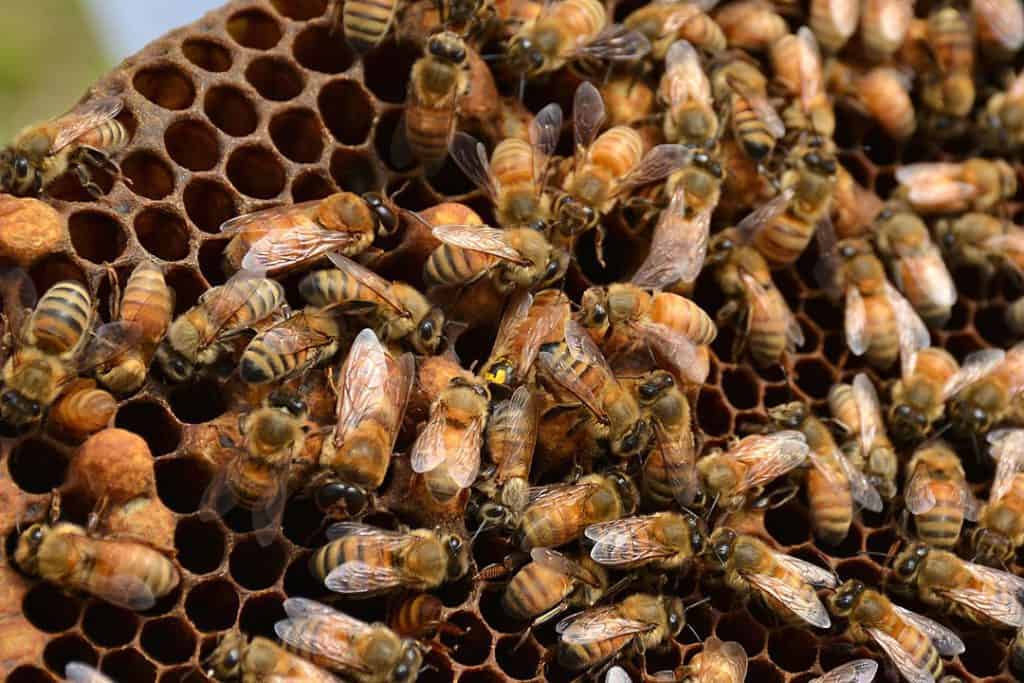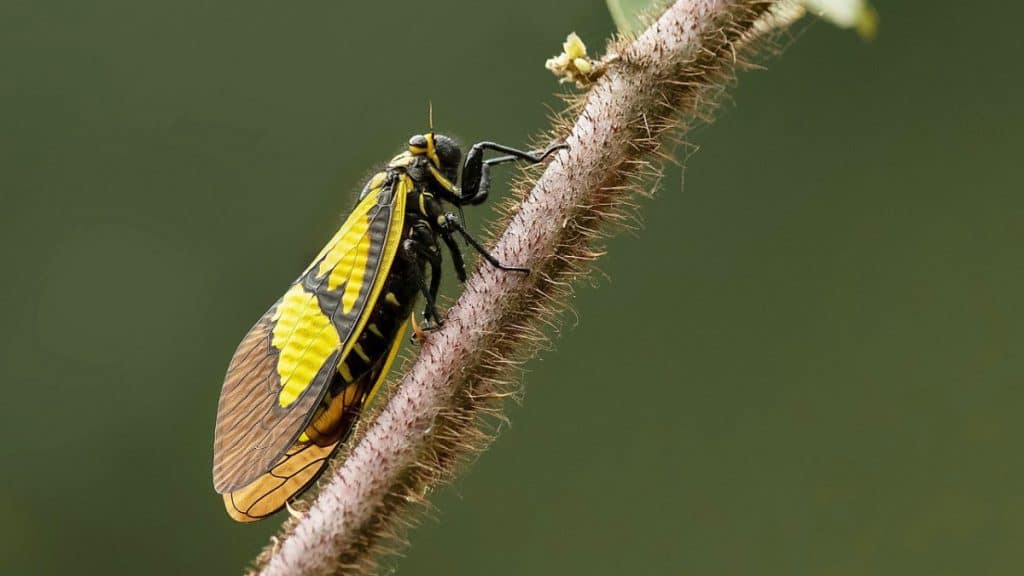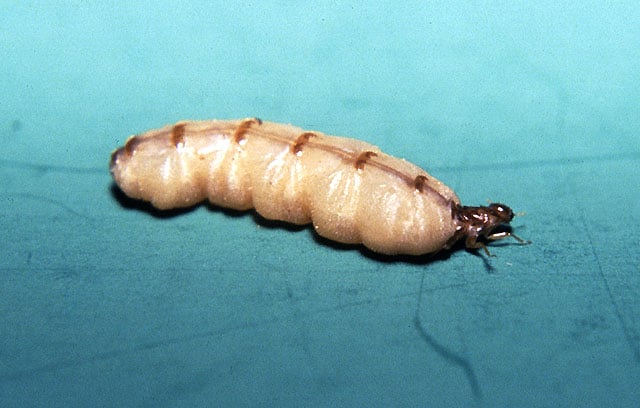
If you enjoy reading this article, why not check out our articles on Everything You Need to Know About Fruit Flies and Are Ladybugs Poisonous?
Which Bugs Live the Longest? The Answer Will Quite Likely Surprise You!
Living it Up!
We learn from the media how certain bugs do not live long at all. Houseflies are extremely lucky to even last a whole month, for example. However, sometimes there are bugs we hear about that live many years. The cicada is extremely well-known (and often easily heard during its mating season), but there are actually two bugs that have it beat when it comes to lifespan: The splendour beetle and none other than the Queen in a colony of termites. All three of these long-lived insects will be examined in-depth and as an added fun bonus the shortest-living insect will be touched upon too!
Cicadas
Identification:
Cicadas are incredibly famous for being…well, incredibly loud! Male cicadas are known for using organs called tymbals to create that famous odd and slightly off-putting sound that is a bit like a hiss and hum. The tymbal organ vibrates quickly and produces an assortment of unique sounds (although it all sounds the same to us) that can mean everything from, “Look out, something is trying to eat me,” to, “This is my territory, no other males come over here,” to of course, “Hey, I need a mate, would any ladies like to join me?”
Another bug that can be very loud is the cockroach! Ever wondered why they hiss? We’ve got an answer for you: Why Do Cockroaches Hiss?
Life Cycle:
Besides how males can be noisy, cicadas are also known for having a lifespan as long as 13 or 17 years….well, technically 17 years.

Here is the thing about how Cicadas are said to live 13 to 17 years. The vast majority of that is spent underground in a non-adult stage. When cicadas as we know them (loud and big) emerge from the ground, at that point they only have five or six weeks of life yet. That’s basically long enough to eat a bit, get some mating done, and die. If adult cicadas are only around for a chunk of weeks why do people like to throw-out that, “Up to 17 years,” number?
Well, when a cicada lays its eggs they do burrow underground as little nymphs that look almost like ants, and they do spend those years eating sap off of tree and plant roots…so they’re alive all those years. However, they aren’t fully-grown adults.
The best metaphor would be to picture if someone spent 17 years as a small child, then suddenly one day emerged out of this kid-shell a fully grown adult who then aged rapidly and died as if they were old after 2 months. That sounds like a horrifying science-fiction movie for a human, but it is basically how cicadas function. Don’t be sad for them though, that still is an extra-long life for a bug, and they have a pretty pleasant 13-17 years underground feasting on sap from roots. Then they get to emerge from the soil, make a bunch of noise (if males), mate, lay eggs (if female) and have the cycle continue anew in another decade and some change.
Splendour Beetle
Identification
First off, it is in fact splendour with the extra, “U,” as if we are spelling it the same way British people do, it is not a weird typo! Part of the family Buprestidae (which are, “Jewel beetles,” the splendour beetle is called a jewel beetle thanks to its shiny metallic coat. Known for how it is wood-boring, it actually can do a lot of damage to trees, making it potentially an invasive species.
Life Cycle:
Thankfully, the splendour beetle has not spread too far, unlike some other shorter-lived jewel beetles that continue to be a concern. This is a good thing as its overall lifespan can be up to 30 years. However, a bit like how cicadas spend a good deal of time not in their true, “Adult,” stage until much later on, the splendour beetle has a chunk of its lifespan as larva.
A female splendour beetle lays her eggs, they hatch, and then those larva proceed to burrow into trees where they feast on the wood for 25 to 30 years (which is not good for the trees and why these wood-boring beetles are not very popular for foilage enthusiasts) before growing to full strength and becoming an adult splendour beetle for some weeks-to-months that are spent doing the usual thing of eating, mating, laying eggs, and dying. Again, no need to be sad for the splendour beetle, however, as a quarter of a century munching on tree bark is delightfully chill for it, and then it gets to spend some time flying around, mating, and otherwise having a grand time.
Females and males have very different habits in the bug world. One example of this is the difference between female and male spiders spinning webs: Do Male Spiders Spin Webs?
Termite Queen
Identification:
Ah, our queen bee, or should we say queen termite? Yes, believe it or not, the queen of a termite colony on average lives 25 to 50 years, with some even possibly surviving a century!

Don’t think they are simply lazing around in old age during this time either, as queen termites consistently lay eggs for their whole lives, with up to a decade of peak egg production. That’s right, 10 years laying eggs at an absurdly optimal level without any pause. Just how heavy of egg-laying are we talking about? Well, should a termite colony have 1,000 workers after perhaps two years of being established, after three more years it could have 300,00 workers laid and born. Also, as termite colonies try to account for the possibility of cold weather or other factors wiping them out, they will at times loosely connect multiple ones together with, “Secondary,” queens of sorts who lay eggs at a decent rate and can always pick-up the pace should the, “Main,” colony find itself wiped-out for some reason (such as an exterminator comes and helps a home full of all these termites!
Life Cycle:
It deserves to be noted that while the aforementioned cicadas and splendour beetles spend most of the years of their long lives less-developed as larvae or such, a termite queen develops fast and is at her adult egg-laying self for pretty much all the years of her life until she dies (at which point a secondary queen takes over or a new one forms as a pheromone emitted by a living queen to prevent too many from forming is then gone and allows a new main queen).
It is remarkable to think for 25 to 50 years and even a whole century a termite queen is steadily laying eggs, but it is how termites have evolved to survive a World that requires steady production of workers to account for all the ways termites can end-up killed (like if they are in your house and you call the exterminator). So yes, of all bugs, the termite queen is the longest-lived, and she sure keeps busy her whole life! Speaking of having a, “Whole,” life, however, it is worth discussing the insect that spends the least amount of time living as an adult.
But Wait, Which Insect Lives the SHORTEST Amount of Time?
With all this talk of insects that can live decades as long as the conditions are suitable, it is worth looking at the insect that lives the shortest amount of time. It is the mayfly, and it usually doesn’t even make it to a full 24 hours once it has left a larval stage (which lasts 2-3 years) and fully hatched. Fully-grown Mayflies do not even have a mouth, as they do not have time to eat.
The males hatch out of the water and stay close to it so that once a female hatches they can quickly mate. After that, they’re done with life and die in under a day. Oftentimes many Mayflies will hatch at once, in a swarm of sorts which allows a hatched male to take advantage of the limited time he has (again, a matter of hours) to mate with a female before they both run out of time. The male mates, flies away a dies. The female mates, lays eggs, and dies. All this in under a day. For comparison’s sake, this process could happen 18,250 times/days in the lifespan of a single termite queen. Quite the range of lifespans!
Conclusion
When everything goes the right way then certain insects can live impressively lengthy lives. Now, due to humans sometimes misunderstanding the exact life stage of an insect we maybe misinterpret how long they are truly alive as adults versus early in life (such as with cicadas and splendour beetles). That said, some insects live a good long while even when fully grown (the queen termite) and regardless of their life stage, being around for decades is pretty darn impressive for a little bug (considering how many big things could stomp-on or eat them)!
While some insects live an astonishingly short amount of time like our little extra discussion of Mayflies, it is even more amazing to consider those insects who live years upon years. You may have known about cicadas, but you maybe were surprised that the longest-living insect can very well be a queen termite. Regardless of what you already did (or did not know) now you’re a pro at the longest-living insects, and you can tell your friends and family the news too! Arguably the biggest takeaway from all this is that you never should hope you can, “Just wait out,” a termite infestation. You don’t want to be sitting around for 50 years hoping it resolves itself!
If you enjoyed reading this article, why not check out our articles on I Saw One Cockroach, Should I Be Worried? and Are Ants Active At Night?
Recent Posts
Tiny Black Bugs in Bathroom NO WINGS: What They Are and What to Do!
Finding tiny black bugs in your bathroom can be uncomfortable, to say the least. Especially if they are persistent, or they appear in very large numbers, which they often like to do. When it...
Tiny Black Bugs in Plant Soil - What Are They & What To Do About It
A short horror story: You get a new houseplant. You do your best to take care of it. You’ve ensured that it has the right soil, the right amount of sun, it gets enough water. And then one day, you...

